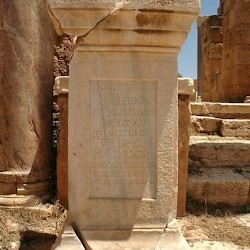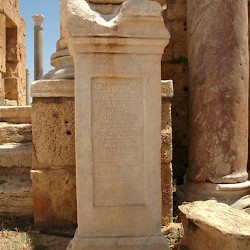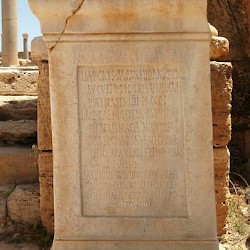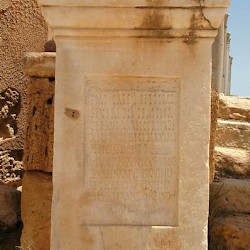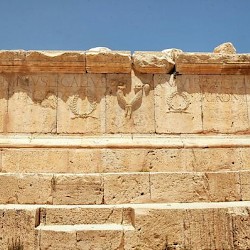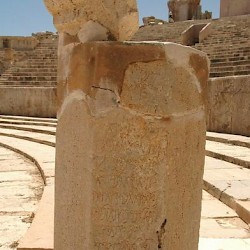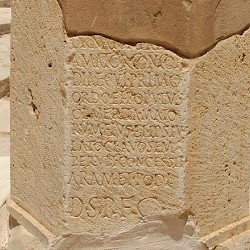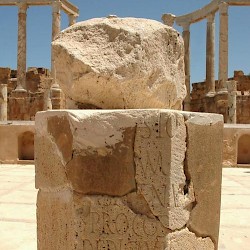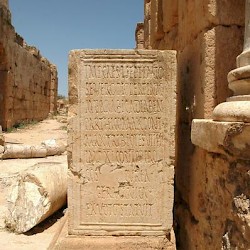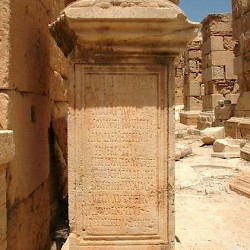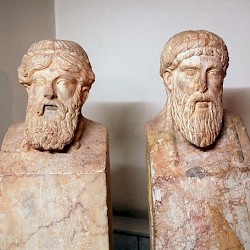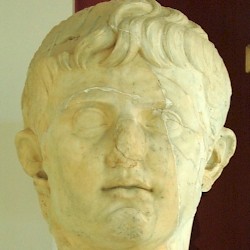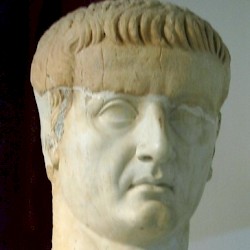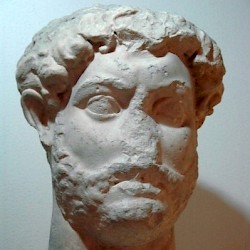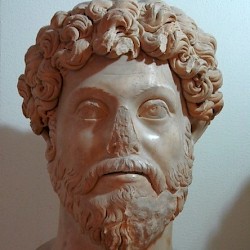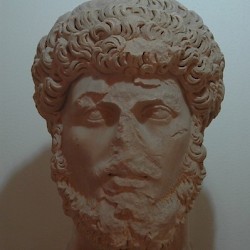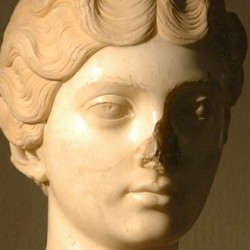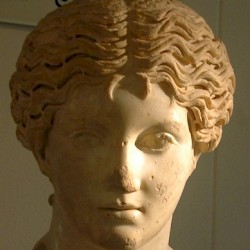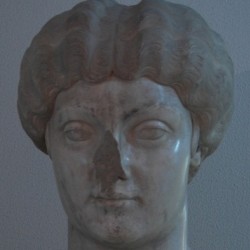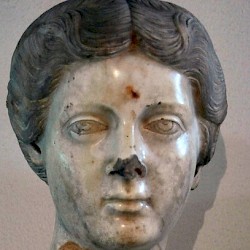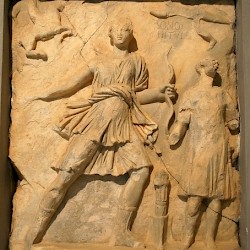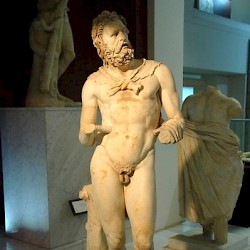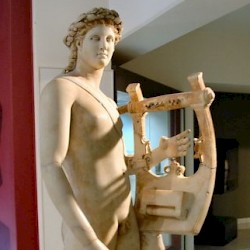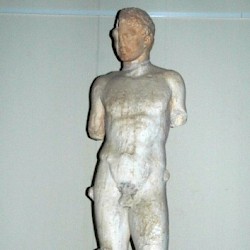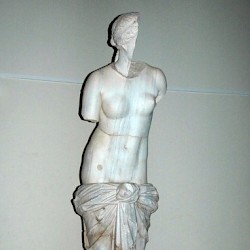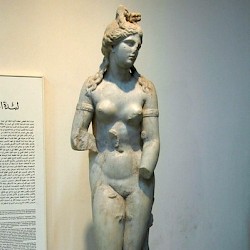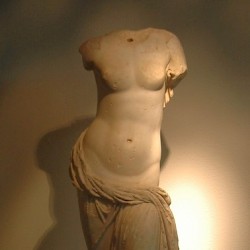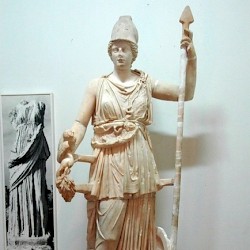Lepcis Magna, Theater
Q55984349Lepcis Magna: Phoenician colony, later part of the Carthaginian empire, the kingdom of Massinissa, and the Roman empire. Its most famous son was the emperor Septimius Severus (r.193-211).
Theater
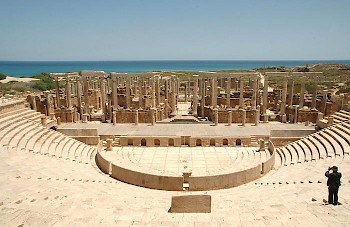
Like so many Greek and Roman towns, Lepcis Magna had a theater. According to an inscription that has survived in three copies (below), the monument was partly financed by a man named Annobal Tapapius Rufus, who had already built the city's market, the Macellum. The theater, the oldest of Roman Africa, was partly created in the slope of a low hill that had until then been used as a cemetery. After the theater of Sabratha, it is the largest south of the Mediterranean.
The upper part of the stands was not excavated from the hill, but built from natural stone, concrete, and bricks. Five flights of steps enabled the people to enter and leave the building, and divided the stands into six wedge-like segments. On the upper edge, a colonnaded walk was erected, which offered shade to the higher seats, where the poorer people sat. The front ranks were occupied by the city's wealthiest citizens, with a tribunal for the magistrates.
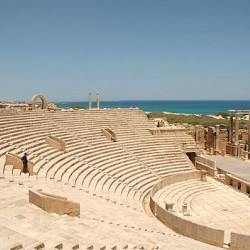 Lepcis, Theater, Seats |
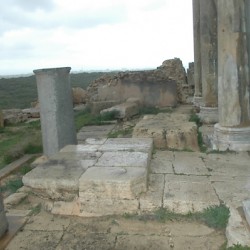 Lepcis, Theater, Temple |
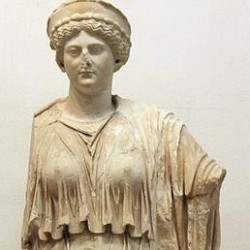 Lepcis, Theater, statue of Ceres Augusta with the features of Livia |
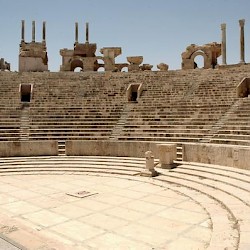 Lepcis, Theater |
Temple
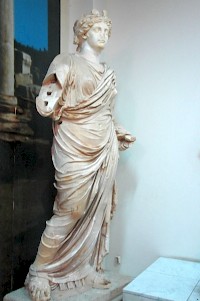
The monument was completed in 1 or 2 CE, but there were many later additions. A small temple was added to the colonnaded walk in 35 or 36, dedicated to the goddess Ceres Augusta. Today, the cult statue from the temple of Ceres Augusta ("the august grain goddess Ceres") is in the National Archaeological Museum in Tripoli. It has the features of Livia Augusta, the mother of the ruling emperor, Tiberius. (The identification was quite usual; there was a second statue of the same empress-goddess in the theater.) An inscriptionnote tells that Gaius Rubellius Blandus, governor of Africa, dedicated the sanctuary, which had been paid for by Suphunibal, "the woman who adorns her fatherland" and daughter of the Annobal Tapapius Rufus who had built the theater itself.
Another addition was the semicircular wall surrounding the orchestra. An inscription mentions that it was made by Tiberius Claudius Sestius, suffete in 91-92.note The pavement was renewed during the reign of Antoninus Pius (r.138-161). Several other additions will be discussed below.
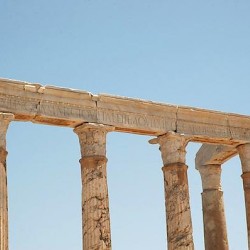 Lepcis, Theater, stage inscription |
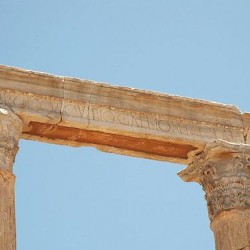 Lepcis, Theater, Stage inscription |
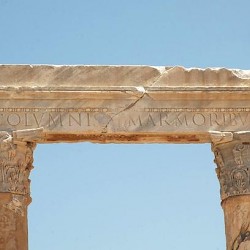 Lepcis, Theater, Stage inscription |
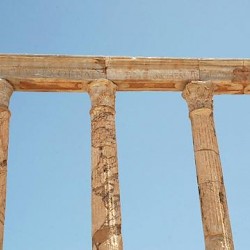 Lepcis, Theater, stage inscription |
Entrances
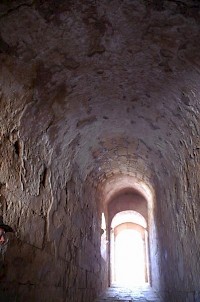
There were several tunnels, cut into the rocky soil underneath the hill on which the theater was erected. They allowed the visitors to enter and leave. There is another possible use for the tunnels, though. Lepcis did not have an amphitheater until 56 CE, and the theater may have served for hunts, executions, and gladiatorial contests, as was common in the Roman world. If this is correct, wild animals, convicts, and fighters may have used the corridors before their fatal visit to the theater of Lepcis Magna.
The main entrance, however, was a road through the open air. Coming from the Cardo, you would enter the theater between the stage and the seats. Both the stage and the access were richly decorated with all kinds of statues. (All in all, 133 statues have been identified.) Two of them, representing Castor and Pollux, survived the barbarian attacks of the fifth century and were rediscovered in near-perfect shape. Most of them, however, were damaged, although they are still impressive objects in the museum of Lepcis Magna itself and the National Museum in Tripoli.
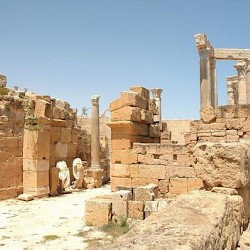 Lepcis, Theater, Entrance |
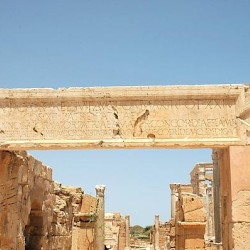 Lepcis, Theater, entrance inscription |
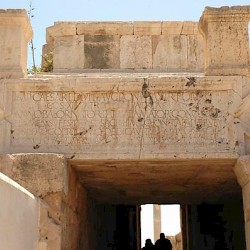 Lepcis, Theater, entrance inscription |
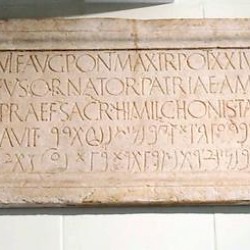 Lepcis, Theater, entrance inscription |
Porticus
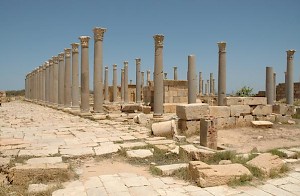
Behind the stage of the theater was a trapezoidal construction that was called Porticus post scaenam by ancient architects. It is a square garden, surrounded by colonnades; in the center was a temple. (Comparable portici are known from Rome: e.g. the Theater of Balbus and the Theater of Pompey.) In Lepcis Magna, the temple was built for the Dei Augusti, "the august gods", by Iddibal, another member of the Tapapius family that had built the theater. This sanctuary was dedicated by governor Quintus Marcius Barea.
Other inscriptions
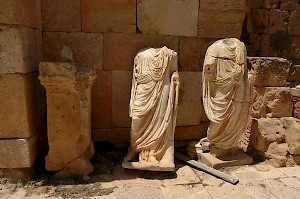
Among the additions to the theater were numerous inscriptions. The set of four on the first line below was erected in 200 CE, and was probably also meant to welcome the imperial family when it visited Lepcis Magna. It is obvious that the official who erected these stelae (a man who had been in charge with the taxes of Thrace and the granaries in the Mercury quarter of Alexandria) was trying to impress the royals and wanted a better procuratorship.
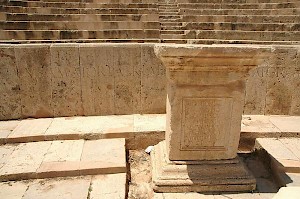
The inscriptions on the second row can be found on the tribunal and on the octagonal column in the orchestra. The tribunal, the box for the city's magistrates, was appropriately decorated with laurel wreaths and cornucopias. According to the inscription, it was added to the theater by governor Lucius Caninius Gallus, acting as patron of the Lepcitanians. This official was governor of Africa in 8 CE, seven or six years after Annobal Tapapius Rufus had finished the theater itself. The octagonal column is another addition and commemorates the rebuilding of the stage during the reign of Domitian (r.81-96). It is very damaged, but the Neo-Punic inscription can be read, and helps us to reconstruct the incomplete Latin texts (from which, for example, the name of the builder is missing).
On the third row are two dedications to Septimius Severus and his wife, the empress Julia Domna. The inscription to the right is written on the pedestal of a statue of Antoninus Pius, which was dedicated by a man named Quintus Pompeius Saturninus.
